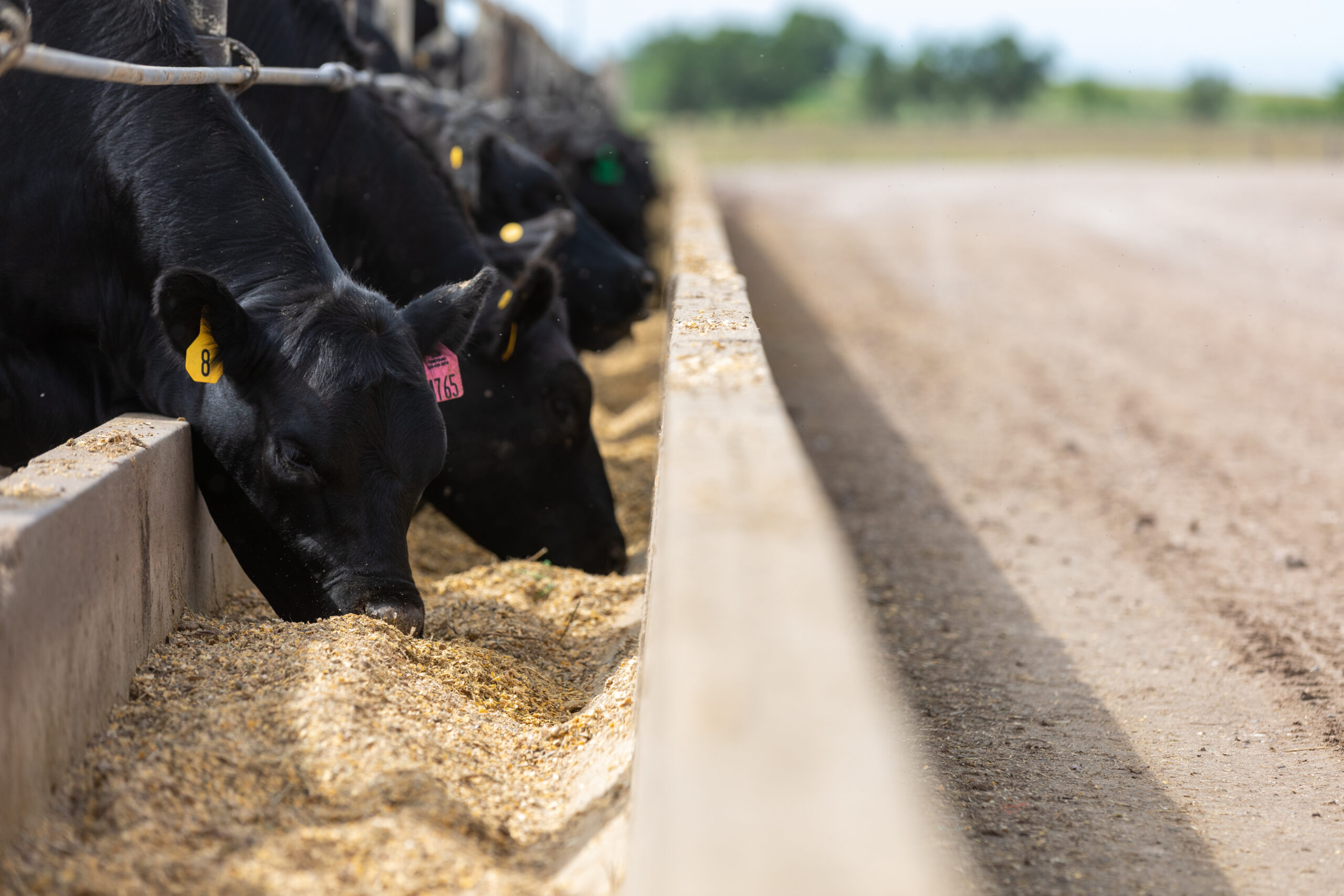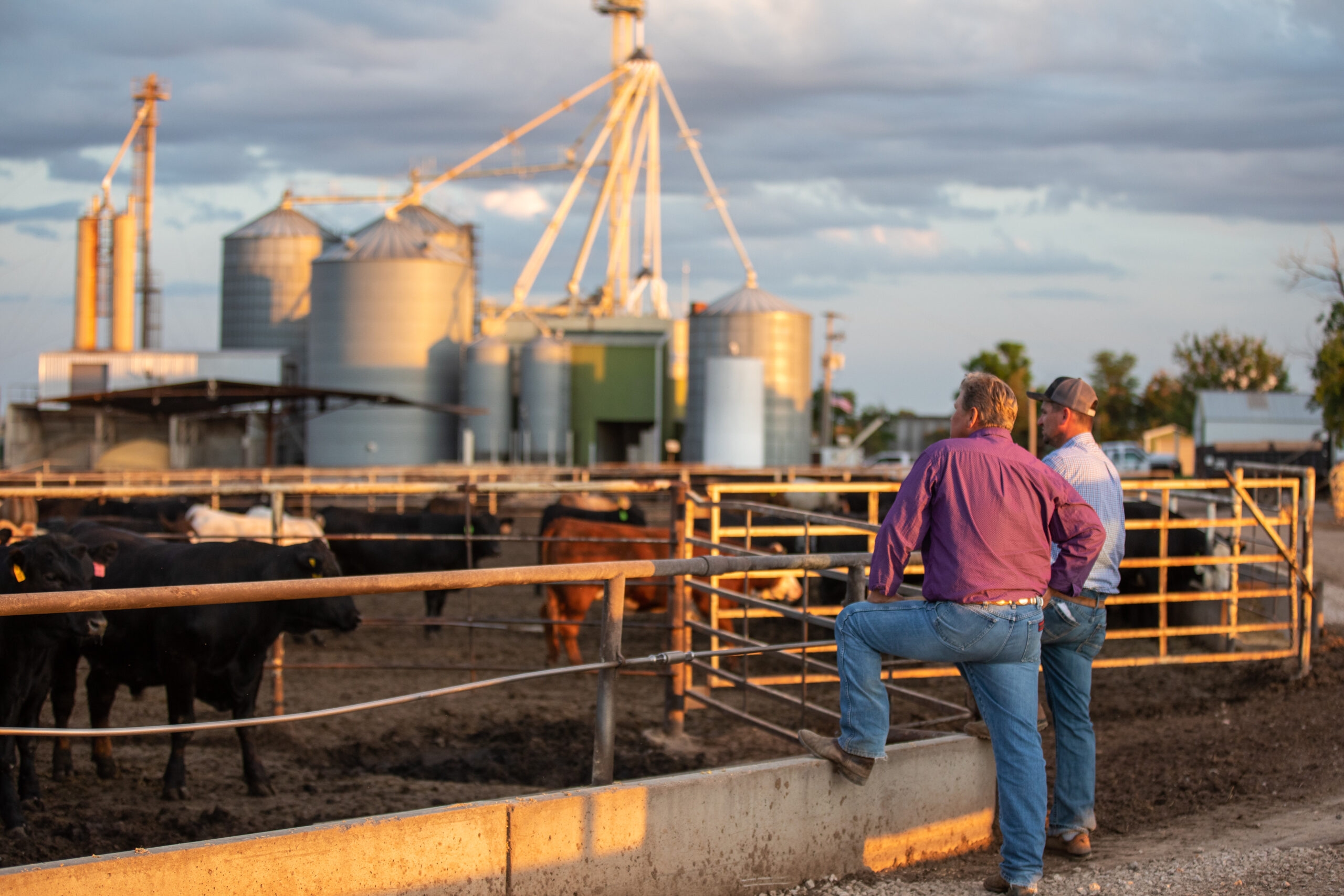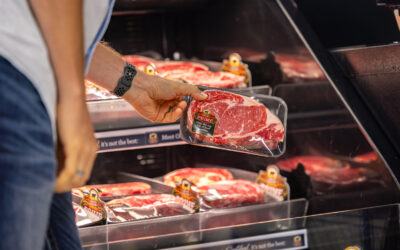
Marketing Feeder Cattle: Begin with the End in Mind
Learn more about on-ranch management, building key relationships and finding the right feedyard for you.
by Lindsay Graber Runft, director of producer communications, and Paul Dykstra, director of supply management and analysis
July 2023
All good outcomes start with a plan. If you’re ready to maximize the value of your feeder calves, evaluate their marketing journey–beginning with the end.
Understanding what constitutes value takes an understanding of beef quality and yield thresholds that result in premiums and/or discounts. Generally, packers look for cattle that will garner a high quality grade (Certified Angus Beef ® (CAB) brand, Prime, 100% Choice) and have excellent red meat yield, but realistically very few do both exceptionally well.
To Steve Peterson, manager at Triple H Feedyard in Lebanon, Kan., the most important thing producers need to know prior to marketing cattle is where they’re at (in terms of quality), and where they want to be.
“I’ve got one producer and he’s fed cattle with me for almost 20 years,” Peterson says. “When he started, he wouldn’t even have 50% Choice. And now his cattle will be 90% plus with 15% Prime high yielding cattle.”
Progress like that starts when you’re making breeding decisions.

From the Ranch and Beyond
Selecting above-average genetics for important terminal traits, like marbling and feed conversion, gives you a head start on the progeny being worth more than market average.
“It goes back to genetics,” Peterson says. “You need know whether you’re artificially inseminating or buying bulls. Look at the $B (Beef Value index). See where those cattle index.”
Feed conversion is critical at the feedyard, which is indicative of average daily gain. Cattle that gain well are converting feed at an efficient pace with a genetic advantage.
To quantify feed conversion, use records of prior performance or look to industry resources for assistance. Genomic tests and Expected Progeny Differences (EPDs) can provide indicators of feed efficiency. But the most straightforward approach is to look at your bull battery and select for growth traits.
The AngusLink℠ Genetic Merit Scorecard (GMS) quantifies the genetic potential of a producer’s calf crop. By using current and past sire information, combined with cows’ breed makeup, calves are given three scores. Each of those scores—beef, feedlot and grid—are combined and the higher the score, the better. Scores range from 0 to 200, with 100 being average.
Producers who want to communicate their calves’ potential carcass merit can use the CAB Targeting the Brand™ logo alongside GMS grid scores. The Targeting the Brand logo will appear on scorecards that meet the qualified threshold through phenotypic (meeting the CAB live animal specification) and genetic (grid score of 125 or better) parameters.
Universally, health is the primary concern. And it’s affected by the vaccination protocol, nutrition management and animal handling on your operation. To increase marketability, all those things need to match best practices from your veterinarian and nutritionist. Be sure to keep good records, too.
When you’re ready to sell, be honest about your calves’ genetic package and how they have been managed. Determine if your cattle will meet, and possibly exceed, the standards packers are looking for to earn a premium. If you’ve got superior genetics and management that has protected the inherent value of your calves, and you communicate that to potential buyers, then you’ll be ahead in the marketing game.
“A producer needs to know what he’s got: has he (previously) collected carcass data, how do his cattle feed, how efficient are they,” Peterson says. “Those are things we look at.”
From there, build your knowledge base around what the market will reward based on feedyard and packing sector parameters.
Genetics, health, and management are all pieces of background information you should have on your calves. Knowledge about your own calves is a powerful tool and can help you decide between selling or retaining ownership.
“I’ve had some of the best-looking cattle here, but they feed terrible,” Peterson says. “I’ve seen cattle that you think would grade 80% Choice and they grade 60%. So, you know, you can tell a lot by looking, but the data doesn’t lie.”
Without the background and production data that garners special interest from buyers, start planning ways to get that information to make more informed decisions at the ranch and in marketing. Otherwise, you may be settling for commodity prices.
Relationships Required for Marketing
When it comes to marketing a group of calves, building relationships with cattle feeders should precede the sell date. While it’s not too late to build a network simultaneous with when cattle are ready to sell, it’s easier as a gradual process.
But where to start? Here are suggestions to begin fostering relationships.
- Phone a friend. Pre-existing connections with other cattlemen and women may be able to offer their network as a starting place.
- Reach out to a university feedyard specialist in one of the major cattle feeding states. They can offer suggestions on feedyards that align with your goals, and potentially connect you to the right person to call.
- Consider large, agriculturally focused banks in dominant cattle feeding states. Loan officers there do a lot of business with feedyards, and can offer insights on reputable feeders.
Growing a strong network and relationship-building with feedyards has value for both selling and retained ownership scenarios.
“You’ve just got to take each marketing scenario, sit down and address it,” Peterson says.
If you’re going to sell calves to a feedyard, develop rapport with the manager. In part, there should be a high level of trust on the quality of your calves and how they will perform. Ideally, your network includes multiple feedyard managers who have substantial knowledge on the type of cattle you’re selling and be willing to pay top dollar.
Communication is key to having a successful retained ownership relationship. Both the rancher and the feedyard need to understand the arrangement and be able to communicate fluidly and timely about performance and marketing options.

Choosing a Feeding Region and Feedyard
As you evaluate feedyards, study your feeder calves and where they would fit in the packer mix. If you have exceptionally high carcass quality, then seek packers with a reputation for rewarding marketing grids.
Remember: Several packers will pay good premiums for the right cattle, so don’t let perception limit reality.
As well, consider geographical location of where you’d like to feed cattle, relative to the packing plant and feeding resources. Consider logical freight distance for cattle delivery, but also feed basis and weather. Corn basis varies widely and becomes more attractive in the corn belt due to proximity to grain. Yet weather and season of the year can play a big part in cattle performance, so measure the two issues in tandem.
If you’re willing to feed cattle across the map, contact feedyards in different regions and build a list of pertinent things to know about each.
Peterson suggests knowing the feedyard’s history as a basis for questions.
“What’s his death loss over the last two or three years? What is the projection on how the cattle will feed? How does the feedyard manage their cattle? Do they feed once or twice, or three times a day? What’s the weather like? And look at the health of the cattle,” Peterson says. “Those are the most important things.”
Overall, a cattle producer should compile a list of positives and negatives on cost, performance history, seasonality and packer access.
Use Your Resources
Maximizing the value of your calf crop takes focus and diligent work. Many resources are available to cattlemen and women, from professional consultation by nutritionists and veterinarians to the AngusLink GMS and CAB’s Targeting the Brand marketing tool. And equally important is a strong network.
Begin with the end in mind, develop a plan for marketing calves and then use your resources to maximize value.
You may also like
CAB Sets Sales Records, Sees Historically High Brand Acceptance Rates
In an otherwise tough time in the beef business, sales and supply records have been a bright spot. The positive numbers mean that quality beef production has not let up, and beef demand is holding. Consumers have proven the value proposition: the good stuff is worth a little more money, for a better eating experience.
Feeding Quality Forum Dates Set Earlier in August
When you’re feeding cattle, it counts to keep track of every calf, pound and dollar. Beyond the event’s educational sessions, networking between segments of the beef supply chain is invaluable—from feeders and cow-calf operators to allied industry and university researchers.
Gardiners Highlight Service, Strength at Foodservice Leaders Summit
Mark Gardiner and his son, Cole, of Gardiner Angus Ranch offered a boots-on-the-ground perspective for CAB specialists attending the annual event, designed to deliver resources that help train foodservice teams and serve consumers at a higher level.



